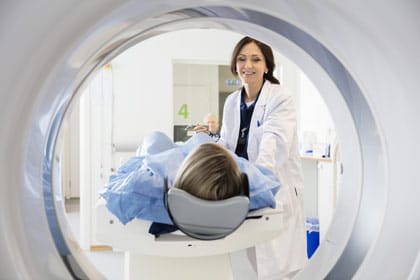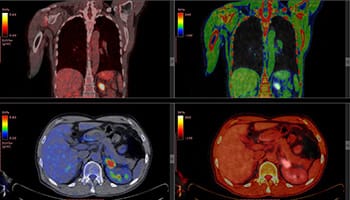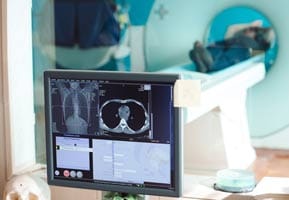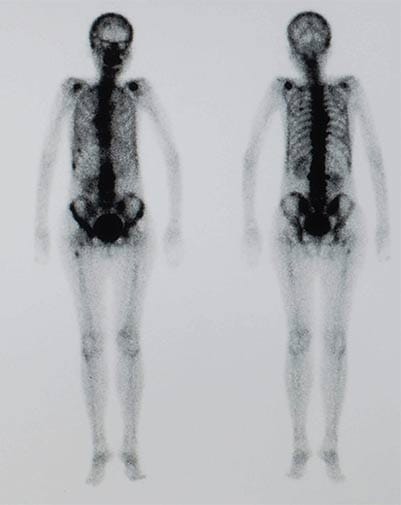Diagnostic Imaging
There are many forms of diagnostic imaging tests used to both determine a diagnosis and treatment plan.
These same tests are also periodically used to monitor the process of your treatment plan.
CT Scan
 A CT scan, or computed tomography scan, is a medical imaging procedure that uses computer-processed combinations of many x-ray measurements taken from different angles to produce cross-section tomographic images (virtual “slices”) of specific areas of a scanned object, allowing the user to see inside the object without cutting
A CT scan, or computed tomography scan, is a medical imaging procedure that uses computer-processed combinations of many x-ray measurements taken from different angles to produce cross-section tomographic images (virtual “slices”) of specific areas of a scanned object, allowing the user to see inside the object without cutting
A computer program then generates a three-dimensional image of the inside of the object from a small series of two-dimensional radiographic images.
To enhance the contrast of the images on your scan, you may be given a contrasting agent. Depending on the agents, contrasts can be administered either orally or by IV.
PET Scan
 Positron emission tomography (PET) is an imaging technique that uses radioactive substances to visualize and measure metabolic processes in the body. PET is mainly used in the area of medical imagining for detecting or measuring changes in physiological activities like metabolism, blood flow, regional chemical composition, and absorption, and therefore, also called a functional imaging technique.
Positron emission tomography (PET) is an imaging technique that uses radioactive substances to visualize and measure metabolic processes in the body. PET is mainly used in the area of medical imagining for detecting or measuring changes in physiological activities like metabolism, blood flow, regional chemical composition, and absorption, and therefore, also called a functional imaging technique.
The PET technique uses radioactive materials (also known as a tracer or radio-tracer) for imaging. A tracer is injected into the body, which gets trapped within the tissues of interest. Unstable tissues emit gamma rays that are recorded and used by a computer program to reconstruct three-dimensional (3D) images of tracer concentration within the body.
PET images are often reconstructed with the aid of a CT scan performed on the patient during the same session, in the same machine. Special tracers are used in the detection of cancer.
MRI Imaging
 Magnetic resonance imaging (MRI) use strong magnetic fields, magnetic field gradients, and radio waves to generate images of the organs in the body. MRI does not involve X-rays or the use of ionizing radiation, which distinguishes it from CT and PET Scans.
Magnetic resonance imaging (MRI) use strong magnetic fields, magnetic field gradients, and radio waves to generate images of the organs in the body. MRI does not involve X-rays or the use of ionizing radiation, which distinguishes it from CT and PET Scans.
An MRI may still be seen as a better choice than a CT Scan for some applications. MRI is widely used in hospitals and clinics for medical diagnosis, staging and follow-up of disease without exposing the body to radiation. An MRI may yield different information compared with CT. Risks and discomfort may be associated with MRI scans. Compared with CT scans, MRI scans typically take longer and are louder, and they usually need the subject to enter a narrow, confining tube. In addition, people with some medical implants or other non-removable metal inside the body may be unable to undergo an MRI examination safely.
 Bone Scan
Bone Scan
A bone scan is an imaging technique of the bone. It can help diagnose a number of bone conditions, including cancer of the bone or metastasis location of bone inflammation and fractures (that may not be visible in traditional (X-rays), and bone infection (osteomyelitis).
A bone scan provides functional imaging and allows visualization of bone metabolism, which most other imaging techniques (such as X-ray and CT) cannot. Bone scans, maybe a considerably less expensive alternative to PET Scans for imaging of abnormal metabolism in bones.